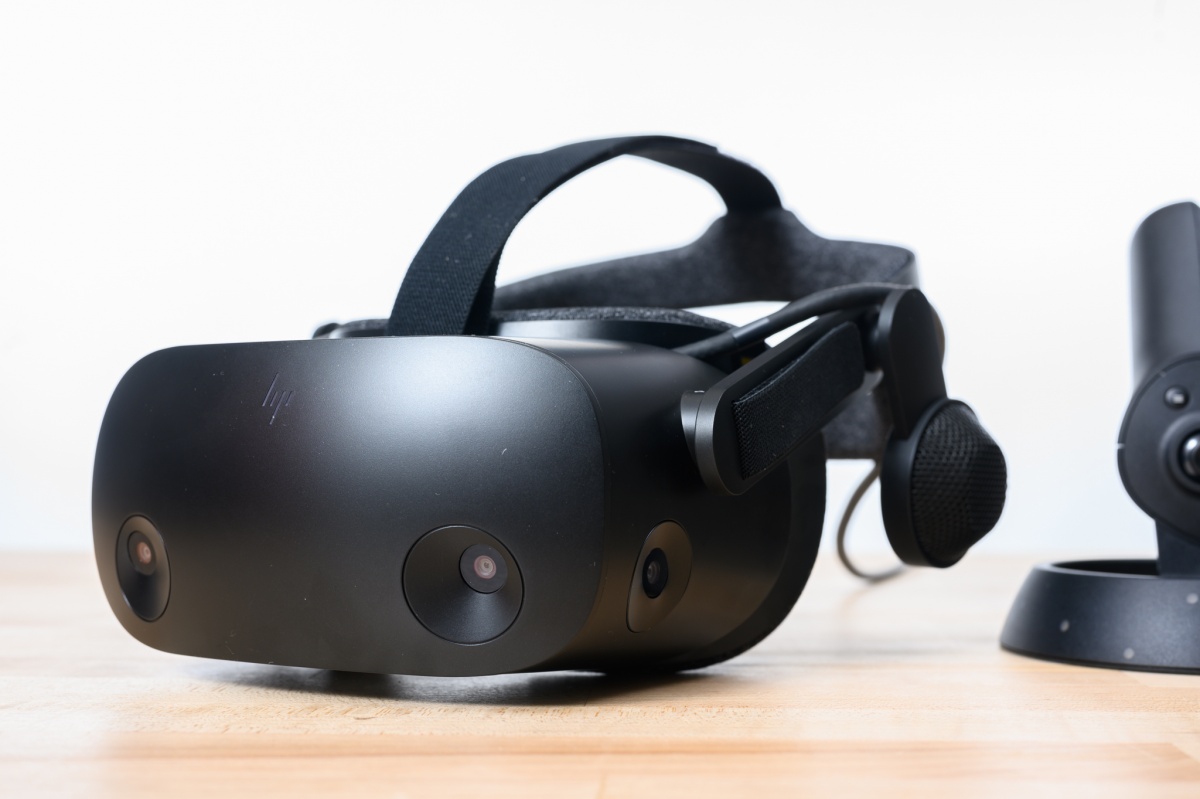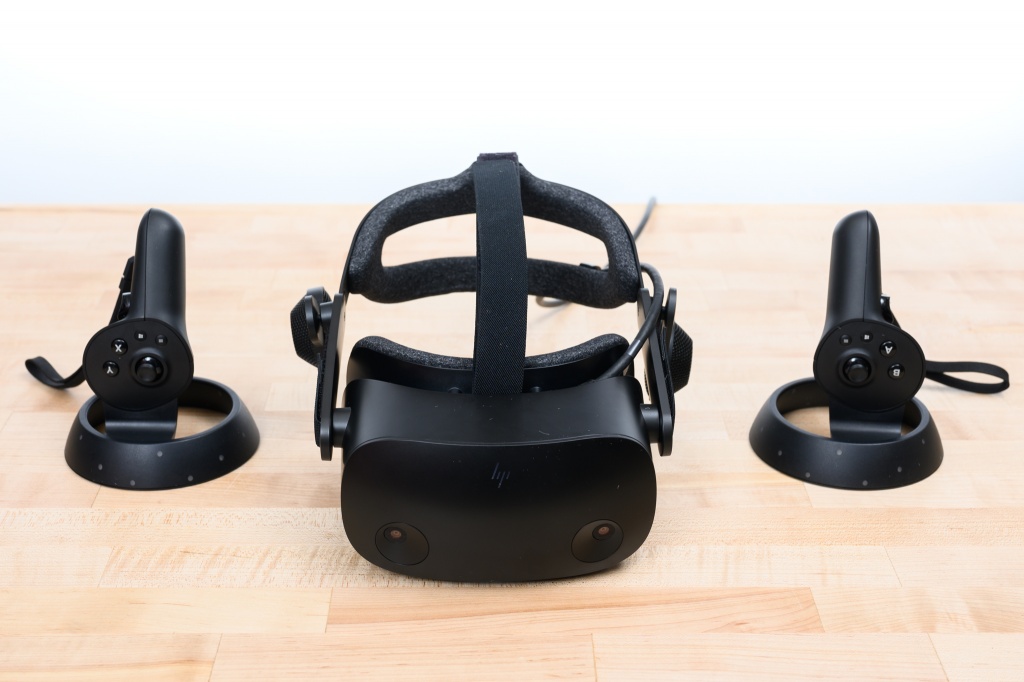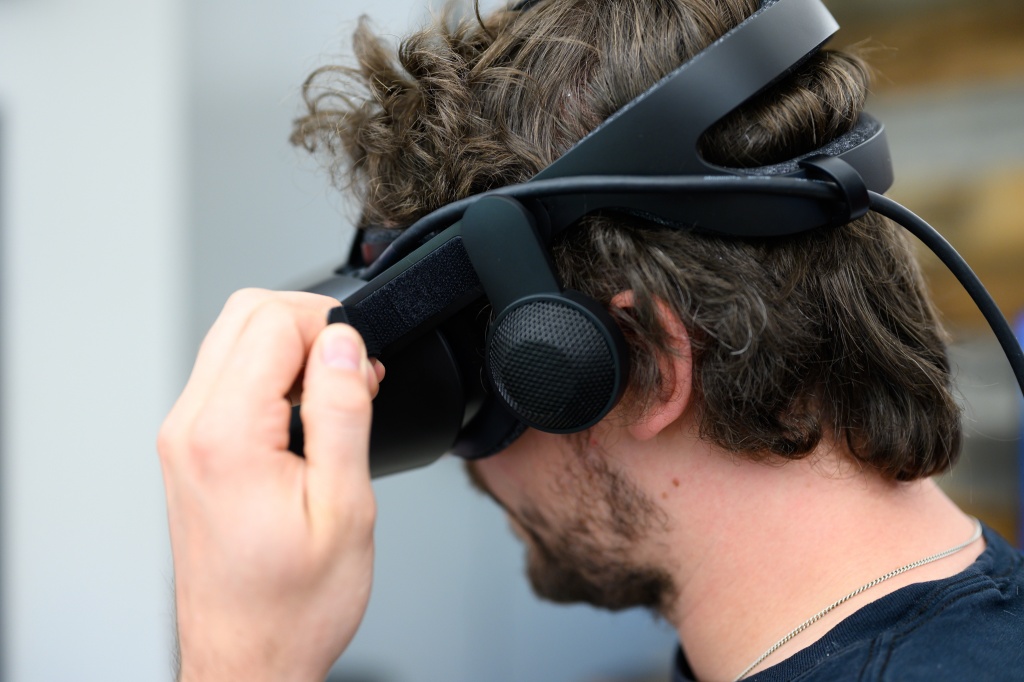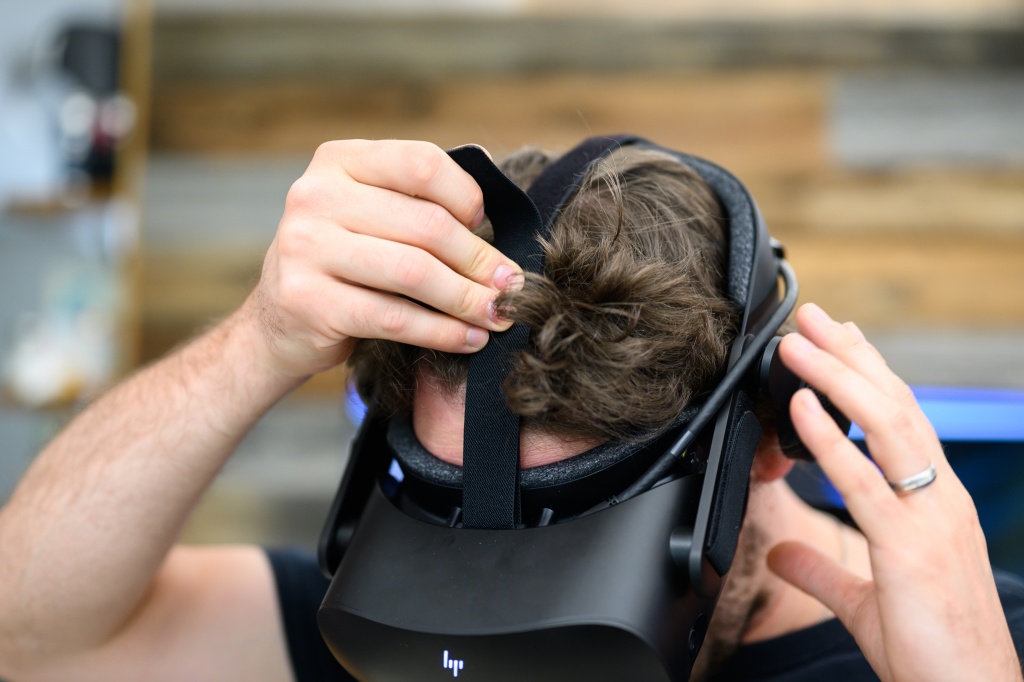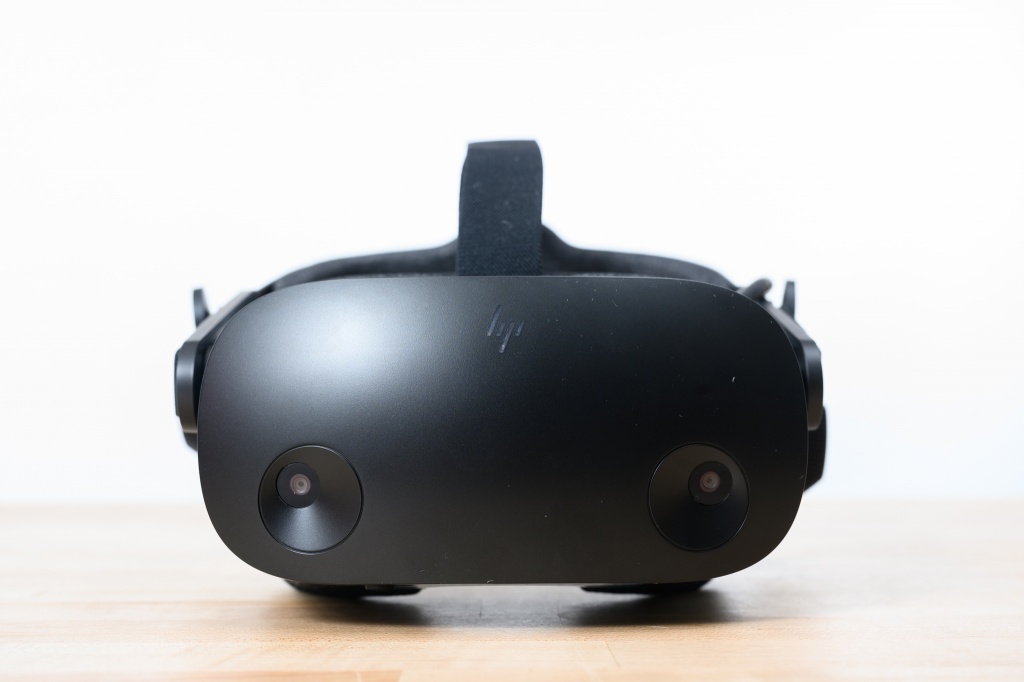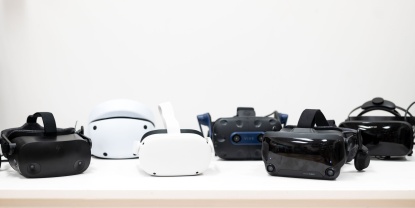Our Verdict
Our Analysis and Test Results
Performance Comparison
Tracking
Our tracking metric gauges the responsiveness and accuracy of headsets and motion controllers as they transpose movement from reality to virtual reality. Instead of relying on external sensor units, the Reverb G2 has four camera sensors built-in to the headset. Like other models designed in this fashion, the accuracy isn't quite as good as with well-placed external sensors.
For an immersive first-person shooter (FPS) game like Half-Life Alyx, the Reverb G2 was more than capable enough to keep us on target throughout the action. We could only find fault by slowly moving the onscreen weapon to induce a minor issue, pixel snapping, where the tracked object skips rather than glides across the screen. And, if we had to take the headset off or adjust something out of the game and come back in, or if we deliberately moved the controllers beyond the cameras' field of view (FOV), we could expect some weirdness as the tracking attempted to right itself. In short, we had to go out of our way to make the G2 misbehave in our Half-Life Alyx tests.
The story differs in a fast-paced, rhythm-based game like Beat Saber, where tracking accuracy is vital. While the G2 did a decent job overall, and we only noted minor issues when moving the controllers too fast or taking them to the extreme edges of the sensor cameras' periphery in 180-degree game modes, problems began manifesting in the game's 360-degree songs. We consistently missed notes when required to glance right or left to the camera periphery. The Reverb G2's tracking is OK for casual Beat Saber play, but it's not quite on par with external sensor setups if you start to advance into more expert territory.
Comfort
The HP Reverb G2 weighs in at a fairly average 1lb 8oz, with the cable running along the left side of the headset and down to your PC. That adds a slight weight imbalance to the left, but we forgot about it after a few moments in VR.
Thanks to about a half inch of smooth cloth-covered padding on the facial mask area and back of the head strap, we could snug up the Reverb G2 for a comfortable and secure fit. Quick left-to-right head pans and even violent head shaking didn't cause any uncomfortable collisions with our nose bridges, which is a blight on many other headsets put to this test.
The Reverb G2 gets warm to the touch on top of the visor, but that heat doesn't transfer into the face padding too much. However, the insulation of the padding against our face did get about as warm and sweaty as we've come to expect from having a hefty mask strapped to our face during physical activity. We'd rate the G2 as average in heat and humidity during play, with only actively cooled headsets surpassing it.
The room inside the headset for glasses is average at best among the units we tested, and none of them are great. However, this is also one of the most highly subjective areas to test due to varying face shapes and styles of glasses.
Visuals
The HP Reverb G2 scored very well here. Text and graphics were generally immaculate and were almost like looking at a nice TV or monitor across all the apps we tested.
Discussions about VR headset visual clarity often mention the “screen door effect” (SDE). As VR headset screen resolution advances, SDE will become less prevalent, but it refers to the human eye's ability to pick up individual pixels and the spaces between them when a video screen is as close to the eye as in VR headsets. It's called the screen door effect because it's like looking through a mesh screen door and diminishes VR immersion. Thankfully, with the HP Reverb G2, we didn't easily notice any SDE in most games and apps. It beat every other headset in our review in this regard, including headsets that cost substantially more.
As to field of view, HP claims 114 degrees, and we were able to measure up to 106 degrees horizontally and 35 degrees vertically in our Realovirtual Workshop test, but keep in mind that FOV in VR headsets can be highly dependent on the individual user's face shape and eye depth.
Daily Use
Here we tested each headset based on their user experience, wearability, and the convenience of fine-tuning the headset's fit. The Reverb G2 performs well in this category with a couple of caveats.
The initial fitting of the three velcro straps on the G2 is a bit finicky. There's a strap on top and one on the left and right side of the head. We generally prefer headsets with adjustable tension knobs to dial in the strap tension, but we appreciated that the Reverb G2's straps have an elastic “spring-loaded” effect that makes it easy to get the general sizing right on the first go. From there, fine-tuning is done by pulling and planting the velcro straps for appropriate snugness.
Once you've made the initial fit, subsequent donning is a breeze, thanks to that spring-loaded elasticity mentioned before. Just grip the rear of the head strap and goggles, pull them apart, place them on your head, and release them. You should find the fit exactly how you set it up initially. The Reverb G2 does daily use better than most, with little need to make adjustments after the first fitting, as long as you're the only one using it. If you're sharing with friends or family with different-sized heads, you might prefer a headset with a knob-based tension system, like the one on the Valve Index.
We also appreciate the swing-away design of the integrated headphones on the Reverb G2. They can rotate up parallel with the headband if you don't want them on your ears, and there is horizontal adjustability to dial in for perfect ear height alignment when you do. Since these are open earphones, there is no external noise isolation. They sound pretty good, although certainly less so than earbuds.
Ease of Setup
This metric is just like it sounds — we examined the initial setup of the device you must go through before you can begin playing. Yet again, the HP Reverb G2 earns high marks thanks in part to the hassle-free nature of its built-in camera sensors.
Most VR headsets require the user to mark off a safe and obstruction-free zone to prevent collisions while in VR, and the Reverb G2 is no different. In fact, this is one area of the setup that we don't love about the Reverb G2. To properly outline the VR barrier, the user must walk around the room while pointing the headset at the monitor and then ensure the floor height registers correctly. Sounds easy, but this part of the setup process is less intuitive than the other headsets we tested.
We like that the Reverb G2 offers different resolution settings based on the power of your PC. You'll need a powerful PC to get the full 2,160 pixels per eye resolution from the Reverb G2, but anyone with at least an Intel i5 or equivalent processor and a Geforce 1080 or better can play on lower resolution.
Should You Buy the HP Reverb G2?
If you're looking for the best VR visuals on the market and have the PC power to harness it, the HP Reverb G2 is a remarkable value, offering 2k resolution per eye and bundled with everything you need to get started. The HP Reverb G2 can even run in a lower resolution mode, giving you time to bring your PC up to spec if that's a consideration. However, those seeking extreme precision and reliability for competitive VR gaming may want to consider an external sensor-based VR kit for superior tracking.
What Other VR Headset Should You Consider?
For those who don't have a powerful PC but still want to try VR, have a look at the standalone Meta Quest 2. Players looking for the best tracking for competitive play should read up on the award-winning Valve Index.


